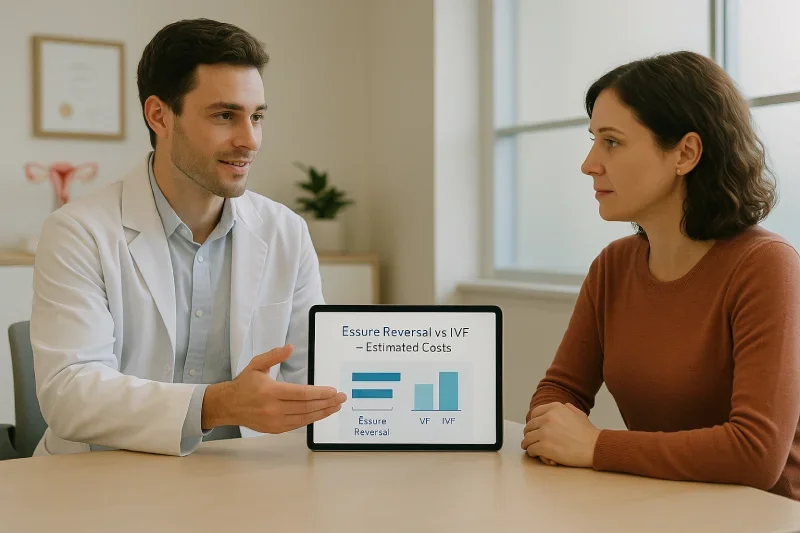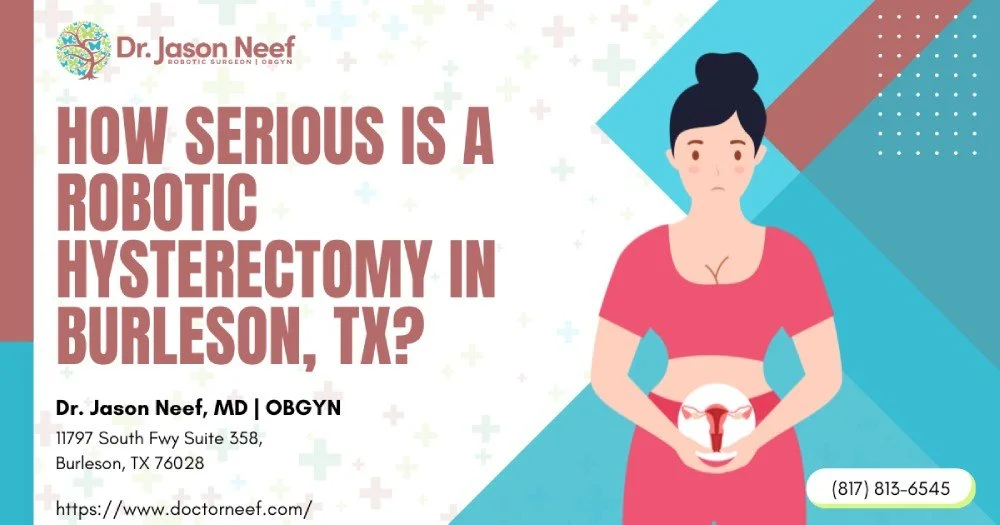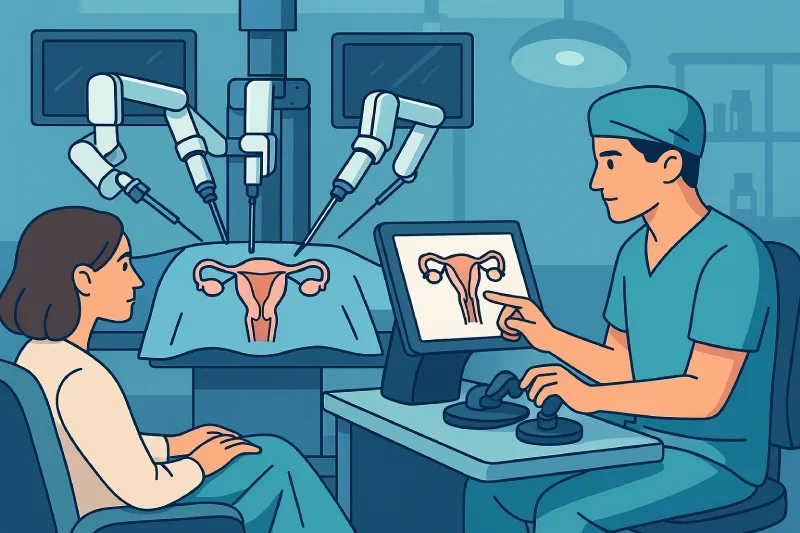Robotic Essure Reversal vs IVF: Which Costs Less?
Categories:
By: Ethan Cole
For women who previously chose Essure sterilization but now want to restore fertility, two main options exist: Robotic Essure Reversal and in vitro fertilization (IVF). Essure reversal is an experimental robotic-assisted surgery that attempts to remove implants and reconnect the fallopian tubes, while IVF bypasses the tubes altogether by fertilizing eggs in a lab. Both fall under advanced fertility treatment, but they differ significantly in cost, accessibility, and success rates. The core question many patients ask is straightforward: which approach is more affordable—surgery or IVF?
This guide compares IVF costs with robotic reversal expenses, outlines insurance considerations, and weighs cost-effectiveness against the likelihood of pregnancy. By the end, you’ll have a clearer view of how these fertility treatments compare financially and what factors matter most in choosing between them.
Key Takeaways
Robotic Essure reversal averages $10,000 as a one-time surgery, while IVF often costs $30,000–$100,000 due to recurring cycles, medications, and lab fees.
IVF has more predictable success rates, especially in younger women, while Essure reversal remains experimental with uncertain outcomes and limited long-term clinical data.
Insurance rarely covers Essure reversal; IVF coverage varies but often excludes medications and multiple cycles, leaving patients with substantial out-of-pocket expenses.
Essure reversal may allow multiple natural pregnancies after one surgery, while IVF typically requires repeated cycles or stored embryos for each pregnancy attempt.
IVF is often recommended for women over 40, those with diminished ovarian reserve, or severe tubal damage, since it bypasses fallopian tubes entirely.
Both treatments carry risks—Essure reversal risks include ectopic pregnancy and failed repair, while IVF risks include ovarian hyperstimulation, cycle failure, and emotional stress.
What is Robotic Essure Reversal?
Robotic Essure reversal is a surgical technique designed to restore fertility after Essure sterilization. Unlike standard tubal reversal, this approach uses robotic-assisted tools to remove Essure implants and reconstruct the fallopian tubes.
How Robotic Essure Reversal Works
This type of robotic surgery is performed through small abdominal incisions using robotic instruments controlled from a console. The Essure coils are carefully removed, and the damaged portion of the fallopian tube is excised. The remaining healthy segments are then rejoined in an attempt to restore a natural pathway for conception. Compared to traditional tubal reversal, robotic assistance offers enhanced precision and visualization.
Average Costs of Robotic Essure Reversal
The cost of robotic Essure reversal averages around $10,000. This typically includes the surgeon’s fee, hospital charges, and anesthesia. Traditional tubal reversal surgery, by comparison, ranges from $6,000 to $10,000 depending on the clinic and surgical approach. Robotic procedures are often more expensive because of the specialized equipment and expertise required.
Challenges and Limitations
Robotic Essure reversal remains experimental and is not widely available. Many women who had Essure implants experience significant tubal damage, which can limit the chances of successful pregnancy after reversal. Only a small number of clinics currently offer this procedure, and long-term data on outcomes are limited. Patients must weigh these uncertainties when considering the surgery.
IVF Treatment Costs and Considerations
In vitro fertilization, or IVF, is one of the most widely used fertility treatments for couples and individuals who cannot conceive naturally. It bypasses the fallopian tubes, making it especially useful for women with blocked tubes, Essure implants, or significant tubal damage. IVF is also chosen when other treatments have failed or when male factor infertility is present. While effective for many patients, it is among the most expensive fertility treatments available. Understanding what the procedure involves and how costs vary is essential when comparing it with surgical options like robotic Essure reversal.
IVF Procedure Overview
An IVF cycle is made up of several steps, each of which contributes to the overall cost. First, medications are prescribed to stimulate the ovaries so they produce multiple eggs in a single cycle. These eggs are then retrieved in a minor surgical procedure performed under sedation. In the laboratory, the eggs are combined with sperm to create embryos. After several days of monitoring, one or more embryos are transferred into the uterus. Extra embryos, if available, may be frozen for future use. Beyond the major steps, patients must also account for regular office visits, blood work, and ultrasound monitoring throughout the cycle. Fertility medications alone can cost thousands of dollars per attempt, and fees for embryo storage or additional laboratory techniques can further increase expenses.
Average IVF Costs by Age
The total cost of IVF depends heavily on how many cycles are needed to achieve pregnancy. Success rates are closely tied to a woman’s age, with younger patients generally requiring fewer cycles than older patients. Because of this, the cumulative expense of IVF can vary dramatically.
|
Age Group |
Average Cost per Ongoing Pregnancy |
|
Under 35 years |
$32,814 |
|
Over 40 years |
$111,445 |
For younger women, one to two cycles may be sufficient, but women over 40 often need multiple cycles to achieve a successful pregnancy. Each additional cycle means repeating of the costs, which is why the average expense rises steeply with age.
Why IVF is More Expensive
Unlike surgery, which is typically a one-time investment, IVF costs accumulate with every attempt. If the first cycle does not result in a live birth, the process must be repeated, often multiple times. Fertility medications can add $3,000 to $5,000 per cycle, and specialized procedures such as intracytoplasmic sperm injection (ICSI) or preimplantation genetic testing (PGT) may add several thousand dollars more. Even when embryo freezing is used, storage fees create ongoing expenses.
Complications such as ovarian hyperstimulation syndrome can also increase costs through additional medical care. These recurring expenses explain why IVF is considered one of the most financially demanding fertility treatments, particularly for older women or those with reduced ovarian reserve.
Robotic Essure Reversal vs IVF: Cost Comparison
When weighing fertility treatment options, cost is often one of the first considerations. Robotic Essure reversal and IVF differ not only in how they work but also in how their expenses are structured. One is primarily a single upfront investment, while the other often requires multiple cycles with recurring costs.
Upfront Cost of Surgery vs IVF Cycles
Robotic Essure reversal typically costs about $10,000 in total. This figure usually covers the surgeon’s fee, anesthesia, and hospital or surgical center charges. It is generally a one-time expense, although follow-up care and additional procedures may add to the total in some cases.
In contrast, the cost of IVF is cumulative. A single cycle can range from $12,000 to $20,000, and when medications and additional services are included, the price per attempt may rise even higher. Because most patients require more than one cycle, total expenses often fall between $30,000 and $100,000 or more.
|
Treatment Option |
Typical Cost Range |
Structure of Payment |
|
Robotic Essure Reversal |
Around $10,000 |
One-time surgery cost |
|
IVF |
$30,000–$100,000+ |
Recurring costs per cycle, higher with age |
Long-Term Cost Efficiency
One of the main financial advantages of Essure reversal is its potential for repeated natural pregnancies. After a successful surgery, couples may conceive multiple times without incurring additional fertility treatment costs. IVF, however, does not provide this benefit. Each pregnancy attempt typically requires a new cycle or the use of stored embryos, which brings added expenses. For families planning to have more than one child, the long-term financial efficiency of reversal may be greater, provided the procedure is successful.
Insurance Coverage and Out-of-Pocket Expenses
Insurance coverage for fertility treatments in the United States is limited. Most insurance plans do not cover robotic Essure reversal because it is considered experimental and is performed in only a small number of specialized clinics. IVF coverage is inconsistent: while some states mandate partial coverage, many patients must pay entirely out of pocket. Even when coverage is available, it often excludes medications, genetic testing, or multiple cycles. For this reason, financial planning is essential. Patients must not only budget for the procedure itself but also anticipate potential additional expenses, especially if IVF is chosen.
Success Rates and Value for Money
Cost is only one side of the decision-making process. For most couples, the true measure of value is whether the treatment results in pregnancy and live birth. Robotic Essure reversal and IVF differ in both reliability and predictability, which directly affects how worthwhile the expense may be.
Pregnancy Chanmmmmces After Essure Reversal
Robotic Essure reversal is still considered experimental, and its success rates are not well established. The main challenge is that Essure implants often cause extensive tubal scarring and damage. Even if the fallopian tubes are reconnected, natural conception may be limited. Reported pregnancy rates are lower than with traditional tubal reversal and carry higher risks of ectopic pregnancy. For this reason, many specialists caution patients about relying on Essure reversal as their sole fertility strategy.
IVF Success Rates by Age
IVF has been studied extensively, with large datasets tracking outcomes across age groups. Success is strongly linked to a woman’s age because egg quality declines over time.
|
Under 35 years |
40–50% |
Higher efficiency, fewer cycles needed |
|
35–37 years |
30–40% |
Moderate decline in success |
|
38–40 years |
20–25% |
More cycles often required |
|
Over 40 years |
5–10% |
Low efficiency, very high cost |
For younger patients, IVF may result in a successful pregnancy within one or two cycles. For women over 40, however, the chances are much lower, and costs rise sharply because of the need for repeated attempts.
Balancing Cost with Likelihood of Pregnancy
When weighing value for money, IVF is often seen as the more reliable option, despite its higher price tag. Robotic Essure reversal costs less upfront but carries uncertain success rates and the possibility of further complicatimons. IVF, while expensive, has a proven track record, particularly in younger women. Couples must consider both their budget and their likelihood of success, balancing financial investment with realistic expectations for conception.
Alternatives and Considerations
For women considering fertility after Essure sterilization, robotic Essure reversal and IVF are not the only possibilities. Evaluating traditional tubal surgery and clarifying candidacy for IVF can help identify the most practical and effective path forward.
Traditional Tubal Reversal (Non-Essure)
Conventional tubal reversal, performed without robotic assistance, remains an option for women who underwent surgical sterilization methods other than Essure. This approach typically costs between $6,000 and $10,000, making it somewhat less expensive than robotic reversal. It is also more widely available, with higher success rates than Essure-related procedures because the fallopian tubes are usually healthier. However, it is not always feasible for Essure patients due to scarring caused by the implants.
Who Should Consider IVF Instead of Reversal?
IVF may be the more suitable choice for women over 40, for those with diminished ovarian reserve, or in cases of severe tubal damage where reversal offers little chance of success. IVF bypasses the fallopian tubes entirely, which makes it more reliable in patients with significant scarring or complex pelvic anatomy. Patients who want faster results or who may not want to risk the uncertainties of reversal often turn to IVF despite its higher costs.
Questions to Ask Your Doctor
Before deciding on a treatment path, it is important to discuss specific medical and financial factors with a fertility specialist. Key questions include:
Am I a candidate for reversal, or is IVF more appropriate in my case?
Based on my age, what are my realistic chances of success with IVF?
What costs will insurance cover, and what expenses will I need to pay out of pocket?
These conversations help ensure that expectations are clear before committing to either option.
Conclusion: Which Option Costs Less?
When comparing robotic Essure reversal and IVF, the financial difference is clear. Robotic reversal costs about $10,000 on average, making it the less expensive option upfront. However, it remains experimental, with limited availability and uncertain success rates due to the tubal damage caused by Essure implants.
IVF, by contrast, is significantly more expensive. Depending on age and the number of cycles needed, total costs can range from $30,000 to more than $100,000. Yet IVF is a proven treatment, with extensive data on success rates and broader availability across fertility clinics.
Ultimately, the right choice depends on individual factors. Younger women with minimal tubal damage may find Essure reversal a cost-effective option, while older patients or those with severe damage may benefit more from IVF despite its higher cost. Patients should weigh financial considerations alongside success rates, personal health, and long-term family goals.
Considering your fertility options? Schedule a consultation with Dr. Jason Neef, a board-certified gynecologic surgeon specializing in minimally invasive procedures. He can help you understand whether Essure reversal or IVF is the right path for your family goals.
Schedule your consultation to explore Essure reversal vs IVF.
Call (817) 568-8731Categories:
Frequently Asked Questions
-
Robotic Essure reversal averages about $10,000 as a one-time surgery. IVF, by contrast, often costs $12,000–$20,000 per cycle, with total expenses ranging from $30,000 to $100,000 or more.
-
No. Robotic Essure reversal is still considered experimental and offered at only a small number of specialized clinics. Availability is limited, and outcomes are not as well studied as IVF.
-
Most insurance plans do not cover robotic Essure reversal since it’s experimental. IVF coverage varies by state and plan—some provide partial benefits, but many patients pay out of pocket.
-
IVF has more reliable and predictable success rates, particularly for younger women, with live birth rates around 40–50% under age 35. Essure reversal outcomes are less certain due to tubal scarring.
-
Yes. If the surgery is successful, couples may conceive naturally multiple times without paying for additional treatments. IVF usually requires a new cycle or use of stored embryos for each pregnancy.
-
Women over 40, those with diminished ovarian reserve, or patients with severe tubal damage are usually better suited for IVF, since it bypasses the fallopian tubes entirely.
-
Risks include bleeding, infection, ectopic pregnancy, or failed tubal repair. Because Essure implants often cause extensive scarring, success rates are generally lower than standard tubal reversal.
-
Yes. Medications, genetic testing, embryo storage, and multiple cycles all add significant costs. IVF expenses typically accumulate, while reversal is usually a single upfront investment.
-
Usually not. Essure causes unique scarring that makes standard tubal reversal difficult. Robotic reversal was developed to address this, though outcomes are still limited compared to other reversal surgeries.
-
For women with healthy tubes and good ovarian reserve, reversal may be more cost-efficient due to potential for multiple pregnancies. IVF, while more expensive, offers higher success predictability.












